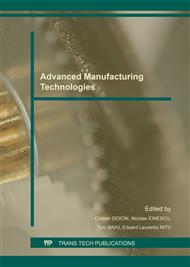p.3
p.9
p.15
p.22
p.28
p.34
p.43
p.49
Recognition of Machining Features Based on Identification of Inner/Outer Loops on Basic Face
Abstract:
There exists different feature definitions, but they all agree upon the point of view that considers features as high level entities. Solid models are built from features instances, which are designated as feature attributes, consisting of feature shape attributes, position and orientation of feature with respect to established coordinate system, material characteristics, geometric tolerances. The definition of manufacturing features links the ensemble of interrelated geometric elements to appropriate manufacturing method. This paper proposes a feature recognition algorithm that identifies features, such as simple hole, tapered hole, counterbored hole, counterdrilled hole, countersunk hole, step through/blind, slot through/blind, pocket through/blind, chamfer, fillet, filleted/chamfered slot, filleted/chamfered pocket, pocket/slot island or boss, based on a set of established definitions, with exemplification on slot features.
Info:
Periodical:
Pages:
9-14
Citation:
Online since:
April 2016
Authors:
Keywords:
Price:
Сopyright:
© 2016 Trans Tech Publications Ltd. All Rights Reserved
Share:
Citation:


